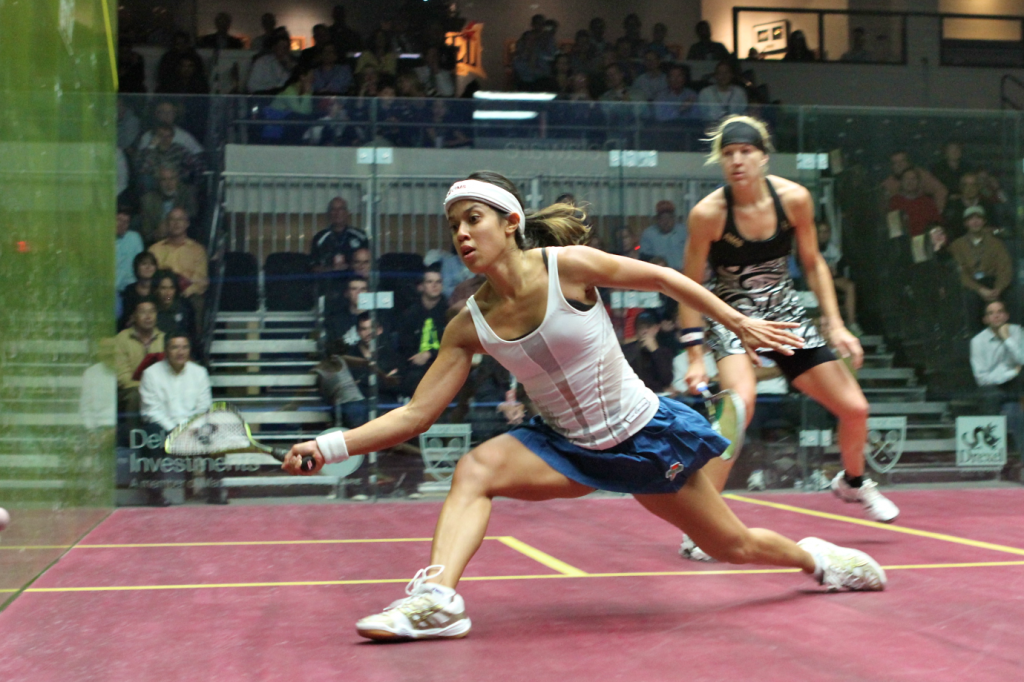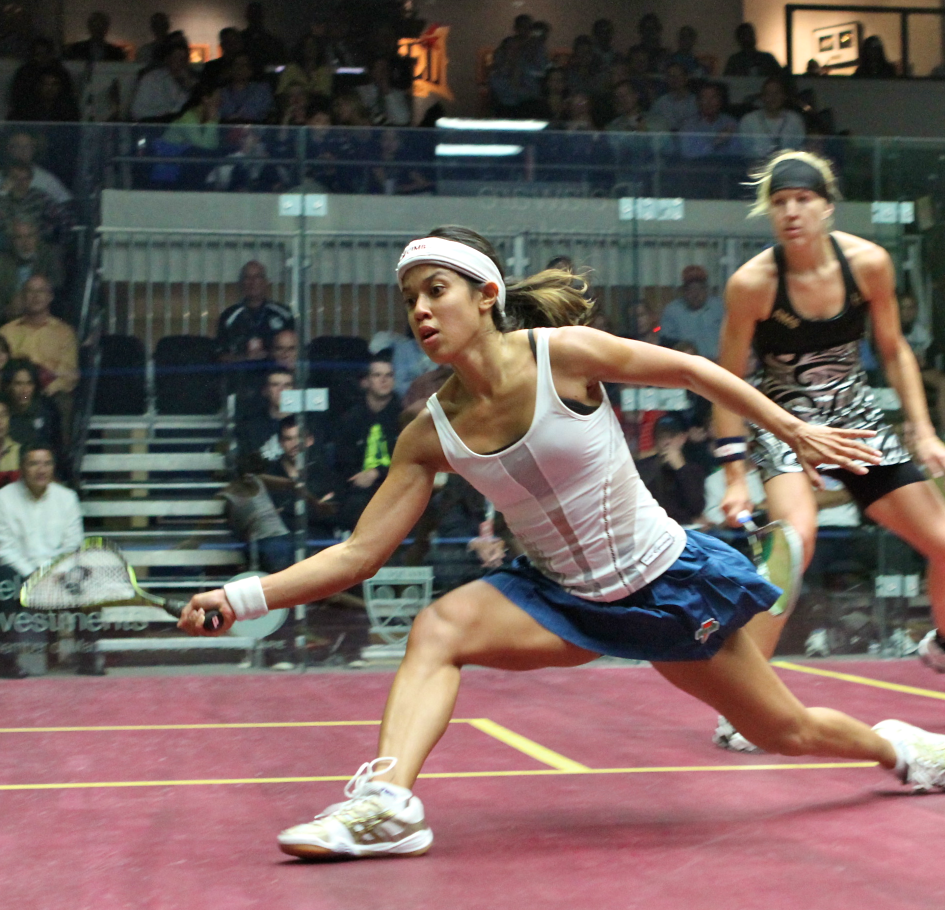By Damon Leedale-Brown, Sports Scientist & Conditioning Specialist
The U.S. Open, held recently at Drexel University in Philadelphia, featured the majority of the World’s leading male and female players. In conjunction with Drexel, US Squash did an excellent job of running the event. The all glass court set-up in the Drexel basketball arena, combined with numerous big screens, provided a fantastic showcase for squash at the highest level, and it was a great opportunity for the local squash community to witness World Class squash on their doorstep.
An event of this nature provides a unique learning environment for both coaches and players alike—a chance to observe the aspects of performance that sets these players apart as the best in their sport, and the lessons that can be taken away and applied to our own coaching and, indeed, our own development as players.

A number of the junior players I work with were able to watch the later stages of the event at Drexel. It is easy just to sit back and watch the entertainment and be amazed by what these players can actually do on a squash court. But rather than simply being absorbed in the overall performance, I encouraged the junior players to choose a certain aspect of play as a focus for one game at a time. This included looking at footwork patterns to and from the ball; speed and position of racquet preparation for different shots and under varying levels of pressure; angles of racket face on impact and follow through; efficiency and flow of movement and connection of the swing to movement technique; variation used in pace and height of shots; shot selection from different positions on court and in different phases of play (i.e., start of match, end of match, etc.); consistency and accuracy of shots.
Another unique advantage of the glass court is the ability to watch play from different positions—through the side wall and front wall. The side wall view gives you a great perspective of the players speed of movement out of the back corners and going forward in the court, along with the position they take in relation to the ‘T’. When they play on the wall you are viewing through, it allows you to observe technical aspects such as where the ball is being hit in relation to their stance (e.g., back/ mid or front), and when they choose to hit balls later in their stance or earlier. The front court view gives you a different perspective of racquet preparation and movement as a player moves forward in the court; the angles and line of the swing as they fire straight balls into the front corners; and the strength and balance to hold low lunge positions when taken into the front. The main observation from the juniors I was with was the use of height that they saw from nearly all the top players—how they used height to relieve pressure and create time when playing from deep in the back or front corners of the court, along with the use of height to vary the tempo and rhythm of the game. I am sure we are all guilty of going on court and trying to bash the ball, and it is not uncommon to see a player respond to pressure by trying to hit the ball even harder. Most players could definitely learn from this!
We can learn also from the mental qualities of the players—the mental toughness shown in managing pressure and dealing with periods of high physical stress; keeping their composure when refereeing decisions do not appear to go their way (some do this better than others!); the ability to maintain focus throughout the match, and during critical phases at the end of closely contested games; their ability to think clearly and make appropriate tactical changes when phases of play are going against them.
Clearly the level at which these World Class players compete is well beyond what most players can ever imagine or dream of! However, we can still learn a great deal from watching, and these principles of analysis can be easily applied across all levels of play. For junior players you should take the time whenever possible to watch some of the top players in your age group or one age group higher. Are the top juniors in your age physically stronger and mentally tougher? Do they display better overall accuracy and consistency, and possess the ability to play entire matches with minimal unforced errors? Are they more aggressive in looking to move forward in the court and take any opportunities to apply pressure? If you are honest with your own abilities this should help you to understand the areas of your game that need development, assuming your goal is to compete more successfully with the best players in your age group or rating. The same applies to adult players who can observe better players during graded events, or take the time to watch the leading players at their club.
As a coach and sports scientist I take every opportunity possible to watch and learn, whether it is the best players in the world in action, or some of the junior players I train competing in a national event. Keep an open mind when your are watching, pick some key themes to focus on that you are interested in or feel are most relevant to your development as a player and you could be pleasantly surprised by what you learn.


